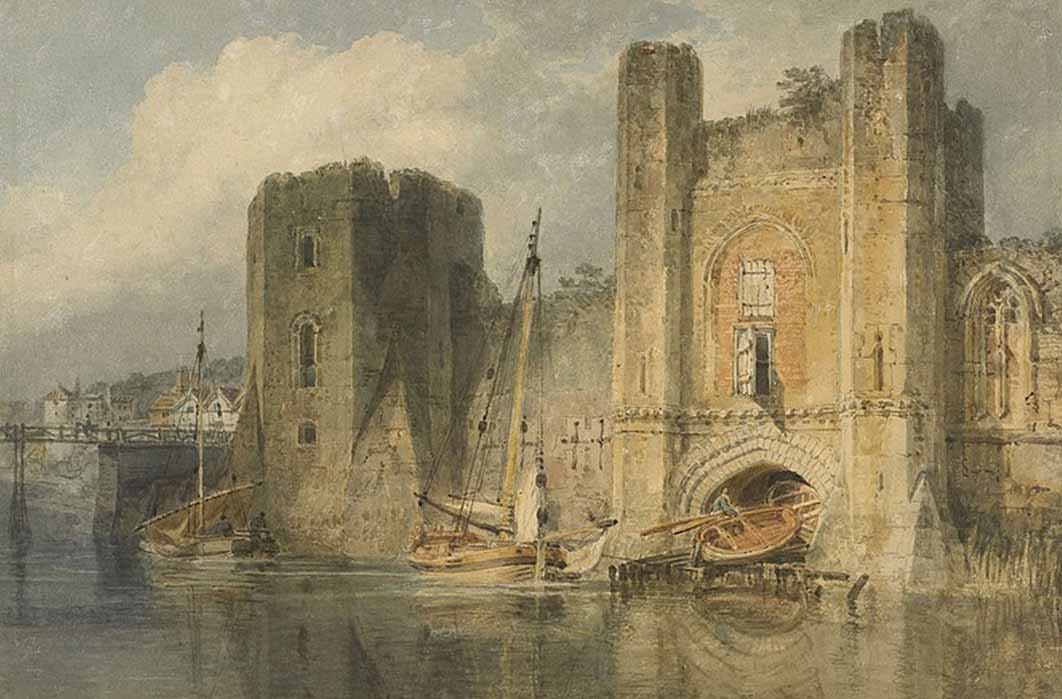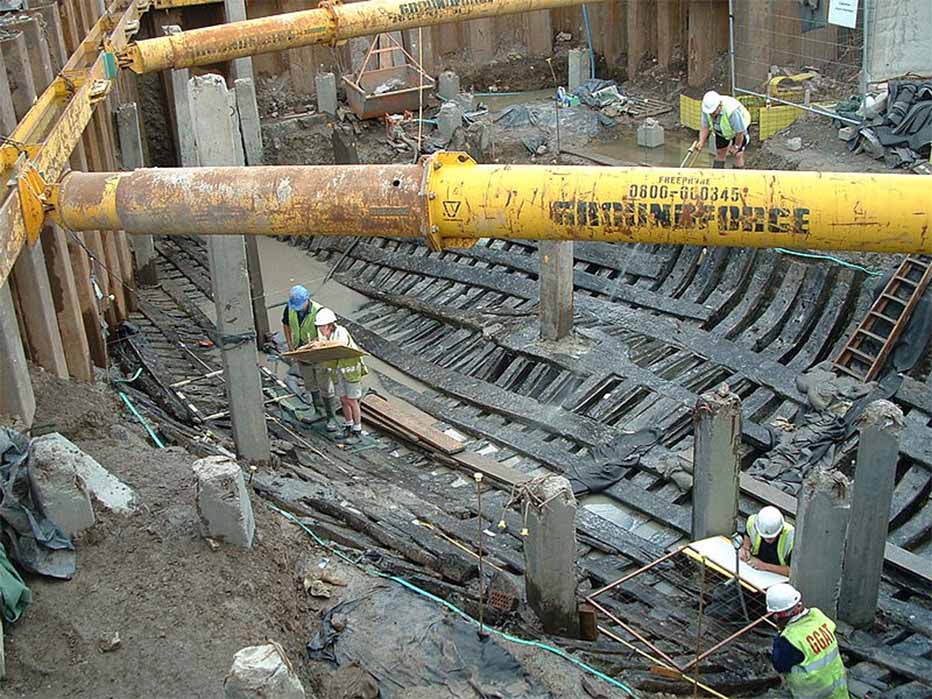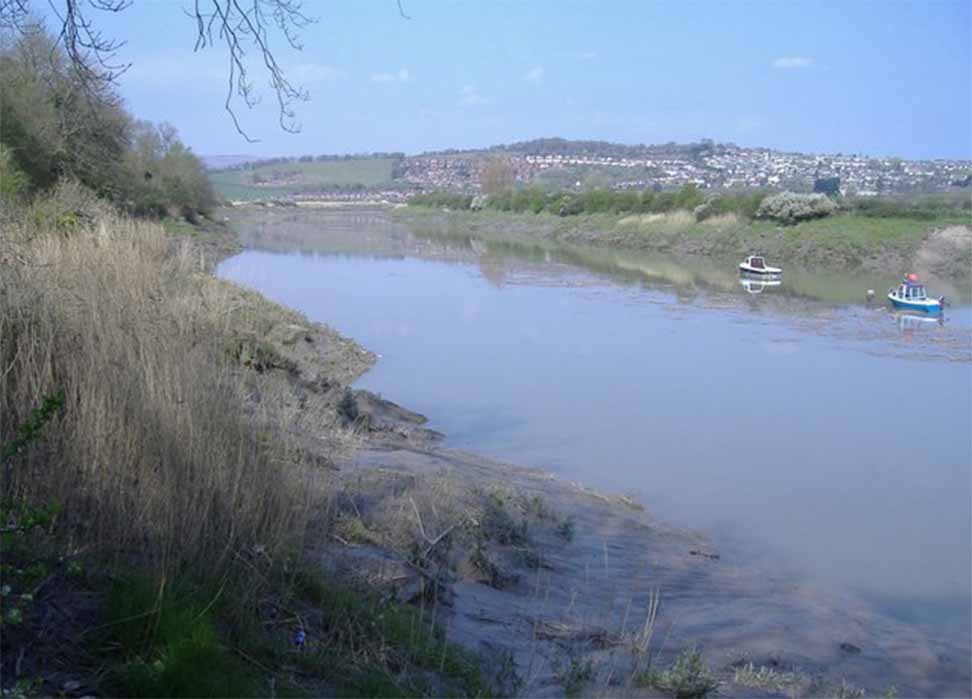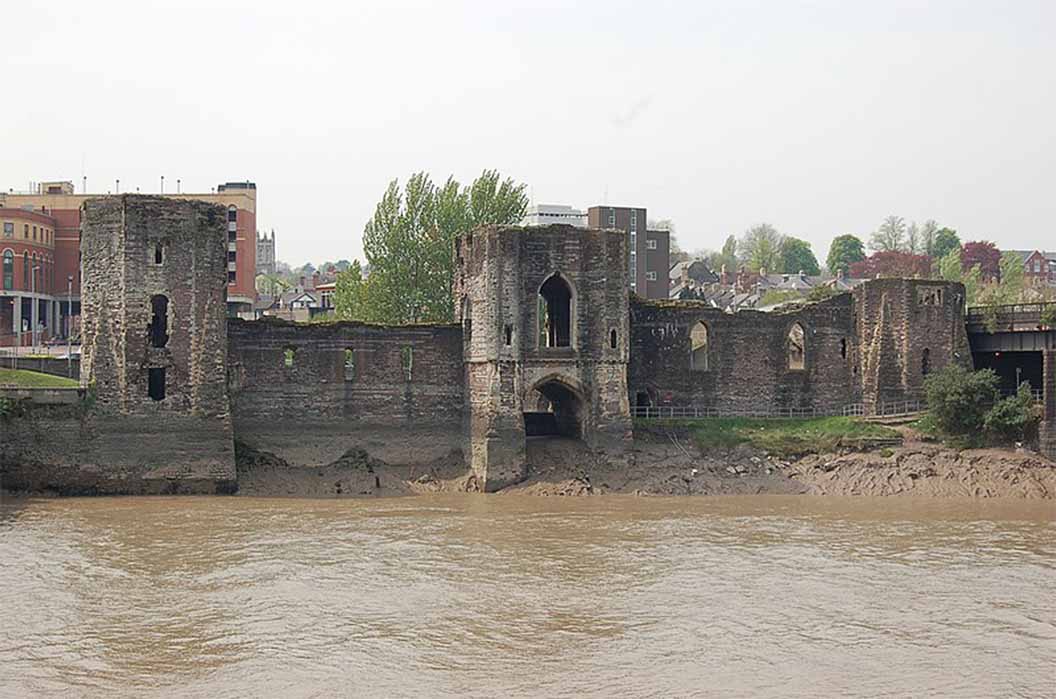
The Newport Medieval Trading Ship Revival
One of the most remarkable maritime archaeological discoveries of the 21st century was the discovery of the ghostly timbers of a medieval ship, embedded in the mud, when renovations of an arts centre were carried out in the Welsh town of Newport, in 2002, leading to its revival starting in 2023. Newport is located 12 miles (19 kilometers) northeast of Cardiff on the River Usk, close to where it joined the River Severn. The construction of a new orchestra pit and auditorium of the Riverfront Arts Centre required deep excavation and 35 concrete piles were driven into the ground. As the Gwent levels, through which the river cuts, had previously yielded other archaeological finds such as a Bronze Age boat uncovered at Goldcliff in 1993 and the Barlands Farm boat, a Romano-Celtic vessel near Magor, archaeologists from the Glamorgan-Gwent Archaeological Trust were commissioned to watch over the work.

The Newport ship in the foundations of the Riverfront Arts Centre (Owain /CC BY-SA 3.0)
Almost immediately it became apparent that there was archaeology present at the site, including some which had already been damaged by previous building work, when what looked like a timber lined drain and a stone slipway were observed within the area of the cofferdam just beneath the muddy surface. These looked, and indeed were, post medieval but by late June the archaeologists had turned their attention to a series of upright timbers which had been observed to the side of the slipway and marine timber specialist Professor Nigel Nayling, was engaged to look at them.
The archaeologists first step was to put in a test trench to investigate, at the base of which a series of large timbers were revealed which suggested that there were in fact medieval timbers present that might warrant further investigation. By the end of June archaeologists had revealed timbers which appeared to be articulated, although they had also been damaged by machines used to clear away the mud when the initial trench was put in. There appeared to be four planks present held together by nails and roves. As they worked to systematically clear away the mud, the ghostly timbers of an almost complete ship slowly emerged.

The River Usk, looking downstream (CC BY-SA 2.0)
Disclosing the Skeleton of a Ship
The ship had been covered in thick alluvial mud, which had created anaerobic conditions, perfect for the preservation of organic material such as wood. The initial timbers proved to be part of the port side which had been destroyed after the ship had been left there, but the starboard side was almost entirely intact.
Despite the archaeologists' excitement the Council originally hoped to keep the discovery under wraps and not excavate the ship, especially as, at that stage, no firm evidence had emerged to enable any dating of the vessel. It was clear that it was a clinker-built Oak ship but that could reasonably have originated from almost any time period prior to the late 1800’s. To establish a date a dendrochronology sample was taken which was then matched against the established chronology for southwest Britain - the results showed that the timber was cut down in the winter of 1467-8, confirming that this was a medieval ship.





